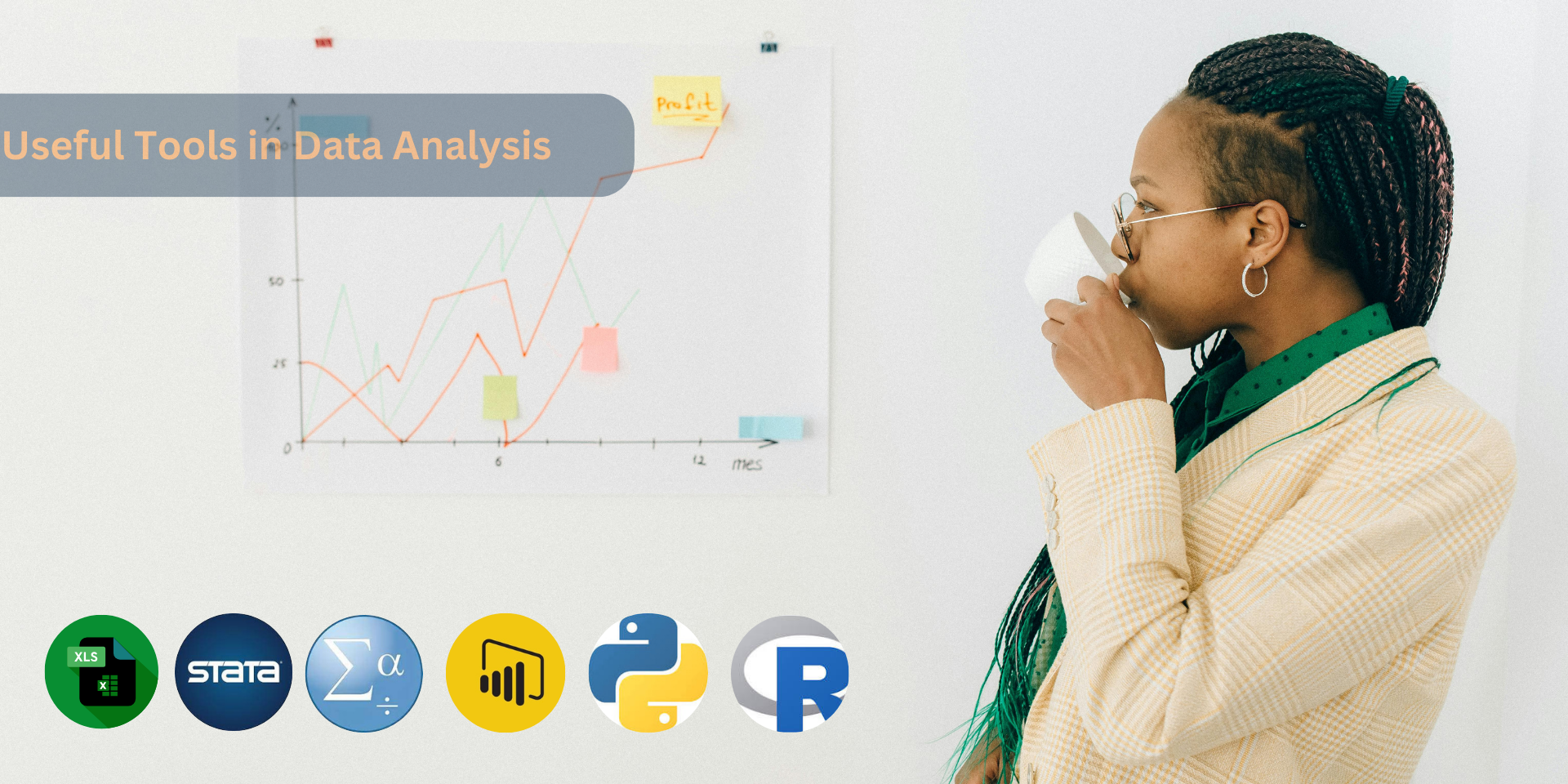The modern business world tends to generate large quantities of data which is used for analytics, decision making and even for the sake of success. Tools for data analysis allow the processing, analysis, and visualization of data that may present trends and patterns. It is not anymore a matter of choosing between available off-the-shelf goods; instead, each of these tools has its own set of functions.
A brief overview of the most important analytical tools.
1. R Programming
R is a free software programming language and software environment for statistical computing and graphical visualization. One of the most popular statistical analysis tools in the world does it because it has a variety of statistical methods, data manipulation functions and visualization mechanisms.
2. STATA
STATA is a fully featured software for statistical analysis and data processing. It is a tool for data pulling, statistical modelling and graphics. STATA are deeply rooted in both academia and research. It can help in many areas such as mathematical work with different types of data.
3. SAS
SAS (Statistical Analysis System), a commercial software suite used by many organizations for data management, statistical analysis, and predictive modeling. For the industries like healthcare, finance, and government institutions that take on giant data projects, it is often the tool of choice.
4. Python
Python is a data analytics language that tops the list because it is easy to learn, it is flexible and also has extensive libraries like NumPy, pandas and scikit-learn. Python gives data analysts and data scientists the whole set of tools for data manipulation, statistical analysis, machine learning and visualization.
5. Excel
Without doubt, Microsoft Excel is the first and the most preferred tool for data analysis in business and academia. The low number of reasons for the popularity of Excel is the simplicity of its interface, spreadsheet functions, and built-in formulas which can be used in almost every industry. Excel covers the basis in data processing, data analytics, and visualization that simplifies the data exploration and basic data analysis processes.
6. Microsoft Power BI
Another power of PowerBI of Microsoft is the built-in connection to the Excel package from Microsoft where users can manipulate, visualize and share insights from their data. These are the features of modeling data and interactive dashboards embedded in the platform as well as its uncertainty with Microsoft products and it being known to many.
Every tool has its strengths and weaknesses, and the most suitable one depends on the type of the data set and the users’ needs as well as organizational limits. Below are the features and applications of this analytics tools to help you to make informed decisions as you embark on data mining trip.
R Programming
R is a programming language and a software platform that was created exclusively for statistical computing and graphics. Information is demonstrated through statistics and charts, as well as a module software. Here’s how it’s used in data analysis:This is the series of data analysis described below:
Data Import and Manipulation
The R language includes a wide range of functions and packages for importing data from different sources, like CSV files, Excel spreadsheets, databases and more. R has functions to manipulate, clean and transform data.
Statistical Analysis
R possesses sets of statistical and data analytic tools. The list contains descriptive statistics, hypothesis testing, regression analysis, time series analysis, clustering and so many other approaches. R has several packages, such as stats, dplyr, tidyr, ggplot2, and etc., implementing these methods.
Data Visualization
R is a powerful tool for data visualization. One of the plot packages is named `ggplot2`, `plotly`, and `ggvis`. These packages offers the capability to create output plots with data characteristics of distribution, relationship, and trends.
Modeling
Indeed, R offers a variety of modeling approaches, linear, nonlinear, machine learning algorithms from `caret` and `randomForest`, `xgboost`, and time series analysis from `forecast`, `xts`, and `TSA`.
Reporting
In addition to R, along with knitr and rmarkdown packages one can inculcate code, results, and graphics within documents, presentations or publications.
STATA
STATA is a tool for data management, statistical analysis, modeling, simulations and programming. Similar to this, it is one of the well-known techniques mainly used in the areas of economics, political science, sociology, and public health. Here’s how it’s used in data analysis:This is the series of data analysis described below:
Data Management
STATA has a broad spectrum of data management tools that include cleaning, shaping, merging and restructuring the data. Syntax is so excellent that it can process big amount of data and complex data structures quickly.
Statistical Analysis
STATA which is a statistical package is dedicated to all the areas of statistics. These include descriptive statistics, hypothesis testing, linear and logistic regression (e.g. and many others, survival analysis, panel data analysis, etc.).
Graphics
Even though STATA is less graphical than R, it can still make the needed graphs and charts for data exploration and presentation. But users can bring in data from R or Python to model more elaborate graphics.
Modeling
STATA covers a broad range of models such as linear and non-linear regression, GLM (generalized linear models), mixed effects models, SEM (structural equation modeling), and Bayesian analysis.
Automation and Reproducibility
STATA’s scripting and batch processing capabilities support running regular operations that produce the same results repeatedly. This especially touches on the reporting and sensitivity analysis.
SAS
SAS consists of various data analytics software including data management, statistical analysis, modeling and integration. It refers to the capability of governments and businesses that work with advanced analytics to draw strength and durability from good designs. It has made a way for the industries such as healthcare, finance, governance and academy to visualize their data with the use of data analysts. Here’s how it’s used:
Data Management
SAS can perform several data management functions such as data cleaning, joining, merging, and data transformation as well. It is a tool for processing large amounts of data and for data verification through quality control.
Statistical Analysis
SAS package offers a variety of statistical procedures for data analysis. They include these methods, such as descriptive statistics, hypothesis testing, regression analysis (linear, logistic, and generalized linear models), ANOVA and survival analysis among others. SAS procedures are known for their power, accuracy, and popularity among academicians and practitioners.
Graphics
SAS uses charts to display the data, but it fails to provide the same level of flexibility and customizability of R or Python more often. SAS has a basic plotting function which can be used to generate histograms, scatter plot and bar graphs.
Modeling
SAS offers a wide variety of predictive analytics and machine learning models. Among these are decision trees, neural networks, clustering, time series etc. SAS Enterprise Miner is a popular tool for model development and deployment.
Integration and Deployment
SAS works wonderfully with the other systems and because of this data exchange and integration problems between databases, spreadsheets, and other data sources become simple. SAS solutions can be installed on-premise or in the cloud, as needed, and they offer high-end analytics tasks the required scalability and performance.
Programming Language
SAS has its own language named as SAS Macro Language that is used for the purpose of data manipulation, analysis and reporting. SAS will not be as strong as R or Python which usually takes a lot of time to learn.
Enterprise Solutions
SAS can be used for the specific domain or industry for instance SAS Healthcare Analytics, SAS for fraud detection and others giving according to your domains or sectors.


